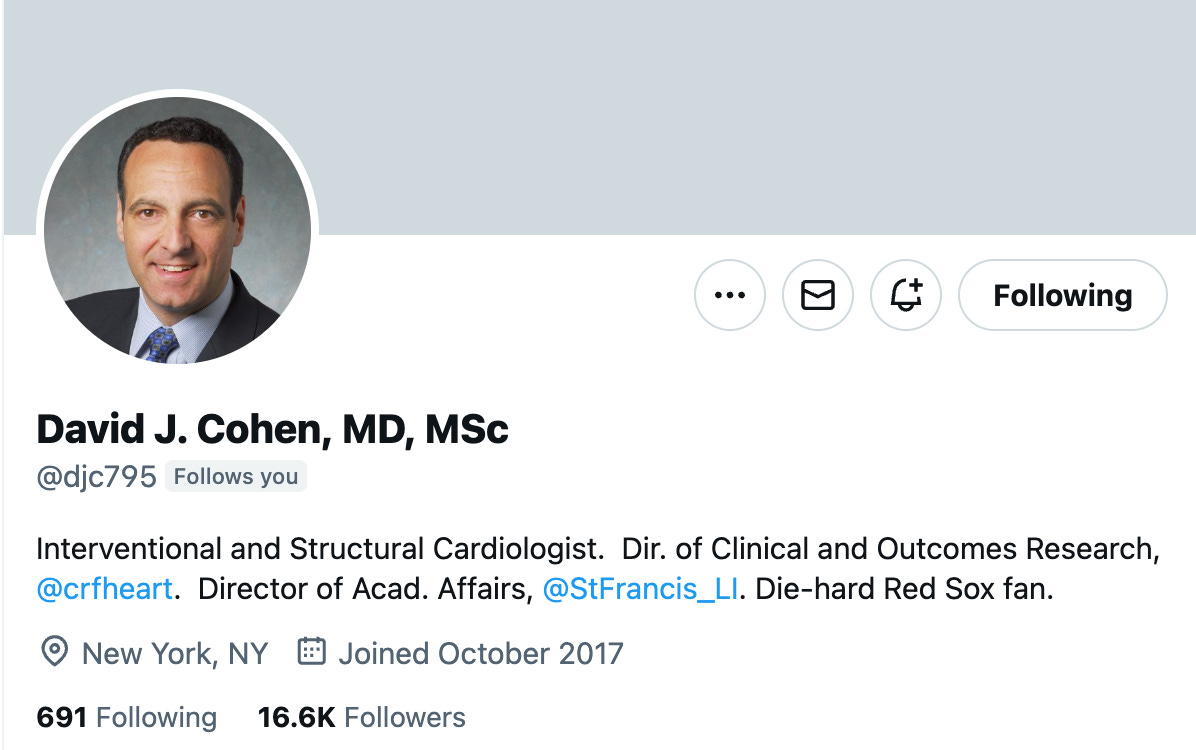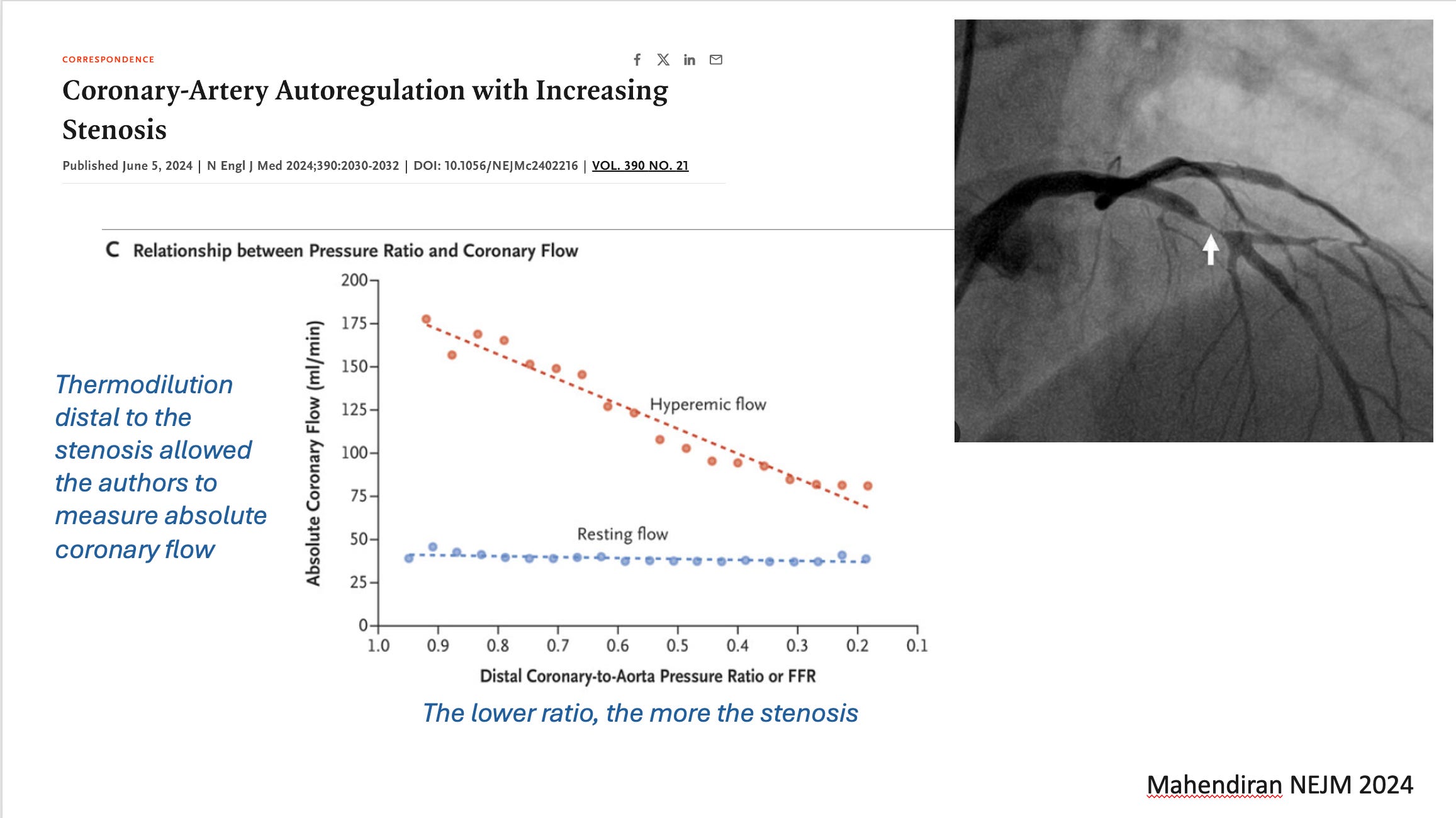A discussion with interventional cardiologist Dr David Cohen on medical evidence, TAVR and stroke prevention
Description
David Cohen is one of the smartest docs on Twitter. I learned a bunch talking with him.
The procedure called transcatheter aortic valve implantation or TAVR is a damn miracle.
In days of old, a heart surgeon would have to saw open the chest and cut out the heavily calcified immobile aortic valve and sew in a new one. I watched a case as a young doctor and came away shocked that patients survive this surgery.
TAVR is even more stunning. Doctors place a valve up the aorta, across the diseased valve, and then place the new valve into the old valve. The verbs squishing or smooshing come to mind.
The other unbelievable thing about TAVR is that strokes are less common than you’d think. When I first heard about TAVR, I thought: how is it not limited by all that debris going into the brain?
Well, there is less debris than I would have thought. But not zero debris. In fact, there is one device on the market that forms a barrier between the aorta and the brain. We call it an embolic protection device (EPD) or cerebral embolic protection (CEP).
Early studies show that the device catches debris that would have occluded blood vessels in the brain—iow, caused stroke. The pictures almost sell the device—because, obviously, catching debris has to be beneficial.
But. But. There are always ‘but’s’ in Medicine.
The PROTECTED TAVR trial, which compared TAVR with and without an embolic protection device failed to show a statistically significant reduction in stroke. It was a good trial, but it did not close the door for the device. For two reasons: one was that the trial was underpowered. The lower bound of the 95% confidence interval allowed for a 1.7% lower rate of stroke in the treatment arm. Neurologists feel that a 1% risk reduction in stroke is clinically important. The other reason was that a secondary endpoint of “disabling” stroke was 60% lower with the device.
We needed more data. Another trial is not likely going to happen. Trials are expensive and take a long time. This is where Dr Cohen’s group comes in. They performed an observational study looking at more than 400k patients in a TAVR registry. About 13% got the device and 87% did not. This is where Sensible Medicine readers should start feeling a rash.
Why? Because you know how scary it is to try and compare outcomes in two groups of patients who were not randomized.
Cohen, however, tells me about a super-interesting way to approximate randomization in this comparison. It’s called an instrumental variable analysis. He explains this to me in clear terms during our conversation. I love methods so I was enthralled. But that isn’t all. The other thing is that his study, like the PROTECTED TAVR trial, came up with tantalizing close results. We discuss that as well.
I loved our talk. If you like evidence, methods, and great medical stories, I think you will also like this conversation. JMM
It’s free to all. We appreciate your support for this experiment in bringing ad-free medical information to the public.
Sensible Medicine is a reader-supported publication. To receive new posts and support our work, consider becoming a free or paid subscriber
This is a public episode. If you’d like to discuss this with other subscribers or get access to bonus episodes, visit www.sensible-med.com/subscribe















